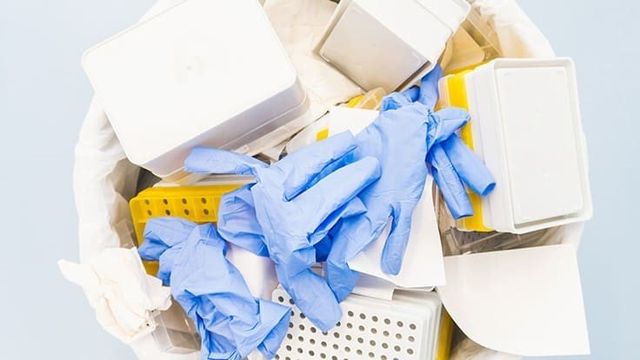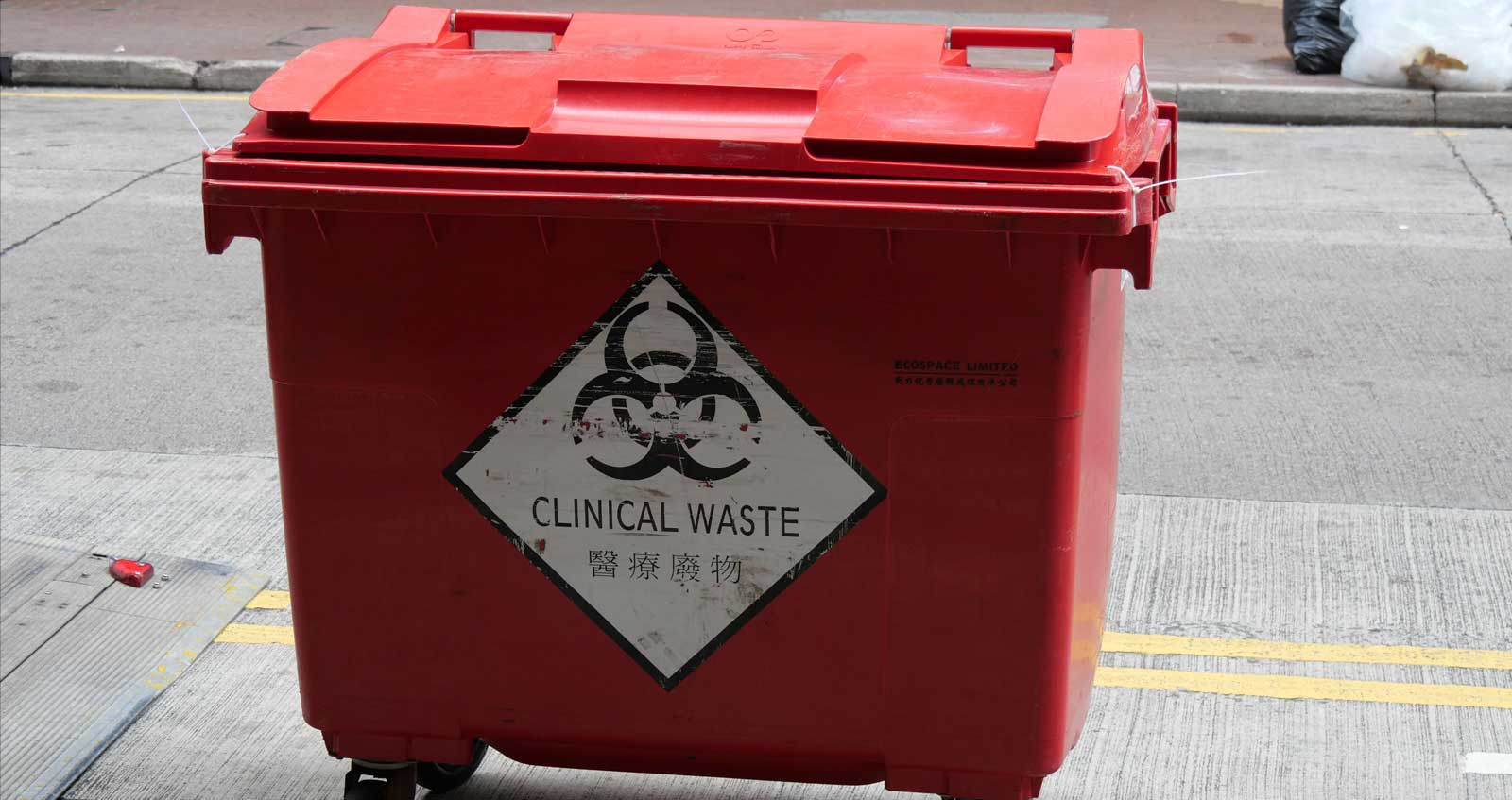Safety and security First: Your Overview to Accountable Medical Waste Removal Services
Safety and security First: Your Overview to Accountable Medical Waste Removal Services
Blog Article
Reliable and Eco-friendly Medical Waste Disposal Solutions
In the ever-evolving area of healthcare, the problem of clinical waste disposal remains a subject of critical value. As medical facilities, facilities, and various other healthcare centers strive to give quality patient treatment, they must also deal with the challenge of effectively and properly disposing of their waste.
Waste Partition Practices
Reliable waste segregation practices are crucial to guarantee the correct and secure disposal of medical waste. Medical waste, that includes materials polluted with possibly contagious materials, have to be managed in a manner that reduces the danger of damage to both public health and wellness and the atmosphere. Correct waste partition plays a critical duty in achieving this goal.
Waste partition entails the splitting up of various kinds of waste based on their qualities and prospective dangers. This process guarantees that each kind of waste is treated and thrown away suitably (medical waste disposal services with WasteX). It starts at the factor of generation, where health care centers must have designated containers and containers for different waste groups, such as sharps, contagious waste, pharmaceutical waste, and non-hazardous waste
By segregating clinical waste at the source, doctor can prevent cross-contamination and lower the risk of direct exposure to infectious representatives. This practice additionally helps with the recycling and recuperation of specific products. As an example, setting apart and recycling tidy plastics and glass reduces the demand for basic materials and lessens the environmental influence of medical garbage disposal.

Autoclaving and Sterilization Methods
In order to make sure the safe and proper disposal of clinical waste complying with effective waste segregation methods, health care facilities need to use autoclaving and sanitation strategies. Autoclaving is an extensively made use of approach that makes use of high-pressure vapor to sterilize medical waste. This process entails positioning the waste in a chamber and subjecting it to a mix of heat and stress, which properly eliminates microbes and provides the waste secure for disposal. Autoclaving is especially efficient in disinfecting products such as surgical instruments, research laboratory tools, and particular kinds of medical waste that can endure high temperatures. medical waste disposal services with WasteX.
An additional typically made use of sterilization method is chemical sanitation. This involves treating the waste with chemicals such as ethylene oxide or hydrogen peroxide, which eliminate microorganisms by disrupting their mobile framework. Chemical sterilization is usually used for heat-sensitive products or products that can not withstand the heats of autoclaving. It is vital to keep in mind that chemical sterilization requires appropriate handling and disposal of the chemicals utilized, as they can be harmful to human wellness and the environment if not managed correctly.
On-Site Waste Treatment Systems
Healthcare facilities have actually applied on-site waste therapy systems to resolve the disposal of clinical waste in a secure and reliable way. These systems supply a affordable and practical service for managing clinical waste created within the center. On-site waste treatment systems utilize various modern technologies to deal with and dispose of medical waste on-site, minimizing the demand for transport to off-site facilities.
One typically used on-site waste therapy system is the microwave innovation. This innovation utilizes microwave energy to decontaminate and sterilize clinical waste, lowering its volume and rendering it secure for disposal. One more system is the chemical disinfection modern technology, which includes treating clinical waste with chemicals to kill virus and minimize its dangerous nature. This approach is especially efficient for liquid clinical waste.
On-site waste therapy systems provide a number of benefits. They remove the threat of clinical waste being messed up throughout transportation, reducing the potential for contamination and exposure to damaging compounds. Furthermore, these systems assist medical care centers adhere to waste monitoring laws by giving a reliable and hassle-free disposal approach. On-site treatment systems lower the total ecological effect of medical waste by minimizing transport and the demand for garbage dump area.
Recycling and Repurposing Campaigns
As health care centers strive for lasting waste administration techniques, they are increasingly checking out recycling and repurposing campaigns as a method of decreasing the environmental impact of medical waste. Reusing and repurposing campaigns entail locating cutting-edge methods to reuse or transform clinical waste right into brand-new products or materials. This not just aids to lessen the volume of waste that winds up in burners or garbage dumps but additionally lowers the usage of resources and energy needed for producing new items.
One example of reusing in the medical care industry is the reprocessing of single-use medical tools. These gadgets, such as surgical tools or catheters, are normally disposed of after a single usage. Nevertheless, advancements in modern technology and rigid sterilization procedures have made it feasible to securely clean, decontaminate, and reuse these tools several times. This not just reduces the quantity of waste generated yet also conserves healthcare centers significant expenses connected with acquiring new tools.
One more reusing initiative includes the recycling of plastic containers, such as drug bottles or syringe cases. These containers can be accumulated, sorted, and sent to reusing centers where they are refined, melted down, and transformed right into brand-new plastic items. This helps to conserve resources and minimize the need for virgin plastic production.
In addition to recycling, repurposing efforts entail locating alternative uses for medical waste. For instance, shredded paper waste from clinical documents or product packaging products can be repurposed as bed linens material for animals or as site insulation material (medical waste removal service). In a similar way, natural waste such as food scraps from medical care centers can be composted and used as fertilizer in gardens or agricultural fields.

Renewable Power Solutions
One reliable strategy to mitigating the environmental influence of medical care procedures entails carrying out sustainable energy services. Healthcare facilities, such as hospitals and clinics, take in considerable amounts of power for different functions, including lights, home heating, cooling, and running clinical equipment. By transitioning to renewable resource sources, these facilities can significantly lower their carbon impact and add to a more sustainable future.

Applying renewable resource options in medical care facilities not only decreases greenhouse gas exhausts yet also offers long-lasting expense financial savings. While the first financial investment in renewable energy facilities may be higher, the long-lasting functional prices of eco-friendly power systems are significantly lower compared to conventional fossil fuel-based energy sources. Furthermore, renewable resource systems are trustworthy and can give a secure and uninterrupted power supply, ensuring continuous healthcare services also throughout power blackouts or emergency situations.
Verdict
In verdict, applying ecologically friendly and efficient medical waste disposal solutions is essential for maintaining a sustainable medical care system. By taking on waste partition practices, autoclaving and sterilization strategies, on-site waste therapy systems, recycling and repurposing initiatives, and eco-friendly power options, healthcare centers can significantly minimize their ecological effect. These measures not only protect the setting however also advertise public health and medical waste disposal services with WasteX wellness and security. It is crucial for medical care organizations to focus on the application of these lasting waste disposal methods.
It begins at the factor of generation, where healthcare centers need to have designated containers and containers for various waste categories, such as sharps, contagious waste, pharmaceutical waste, and non-hazardous waste.
In order to make certain the correct and safe disposal of medical waste complying with reliable waste segregation practices, health care centers must employ autoclaving and sterilization strategies.Healthcare facilities have applied on-site waste therapy systems to address the disposal of medical waste in a risk-free and effective fashion. On-site waste treatment systems utilize different innovations to get rid of and deal with of clinical waste on-site, decreasing the demand for transport to off-site centers.
As healthcare centers strive for Go Here sustainable waste management practices, they are increasingly exploring recycling and repurposing initiatives as a way of decreasing the environmental effect of medical waste. - medical waste removal services
Report this page